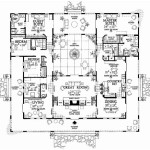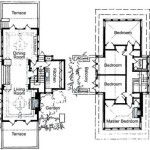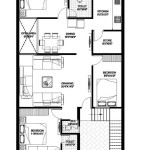Building Plans For A House
The blueprints for a house are more than just a stack of papers; they are the roadmap to your dream home. They depict every component of your house, from the foundation to the roof, ensuring that every element is constructed to perfection. These plans serve not only as a visual guide but also as a legal document that builders and contractors adhere to during the construction process.
Before embarking on the planning phase, consulting with an architect or designer is highly recommended. These professionals possess the expertise to translate your vision into a functional and aesthetically pleasing design that aligns with your specific requirements and lifestyle. They can guide you through the complexities of architectural design, ensuring that your house plan meets all necessary building codes and regulations.
The initial step in creating house plans entails defining the overall layout and flow of your home. Determine the number of bedrooms, bathrooms, and living spaces you require, and how you envision them interacting with each other. Consider the size and shape of the lot and how the house will be situated on it, taking into account factors such as natural light, privacy, and outdoor living areas.
Once the layout is finalized, the detailed design phase commences. This involves specifying the materials to be used for the foundation, walls, roof, and interior finishes. Electrical, plumbing, and HVAC systems must also be carefully planned to ensure efficient and comfortable living conditions. Windows and doors should be strategically placed to maximize natural light and ventilation while maintaining privacy and security.
Building plans also include detailed drawings of each room in the house, showing the placement of walls, windows, doors, and built-in features such as cabinets and closets. These drawings provide a clear understanding of the dimensions, proportions, and overall aesthetics of each space. They also serve as a reference for contractors to ensure accurate construction.
In addition to the main house plans, additional drawings may be required for specific elements or systems, such as electrical schematics, plumbing diagrams, and HVAC layouts. These detailed plans provide comprehensive instructions for the installation and operation of these systems, ensuring their safety and efficiency.
Once the house plans are complete, they will undergo a review and approval process by the local building department. This process ensures that the plans comply with all applicable building codes and zoning regulations, guaranteeing the structural integrity and safety of your home. Upon approval, the plans can be used to obtain building permits and commence construction.
Investing in well-developed house plans is crucial for a successful building project. They serve as a blueprint for construction, ensuring that your dream home is built to your exact specifications and meets all necessary safety and building codes. By working with experienced professionals and carefully planning the design phase, you can create a house that perfectly suits your lifestyle and provides a comfortable and enjoyable living space for years to come.

Easy To Build Houses And Floor Plans Houseplans Blog Com

Easy To Build Houses And Floor Plans Houseplans Blog Com

Floor Plans Types Symbols Examples

Easy To Build Houses And Floor Plans Houseplans Blog Com

Typical Floor Plan Small Apartment Building House Plans Residential

Floor Plans Learn How To Design And Plan

10 Things To Consider In A House Plan Ck

Floor Plans Types Symbols Examples

House Plans Home Residential

How To Build A House From Paper Plaster Architectural Digest








